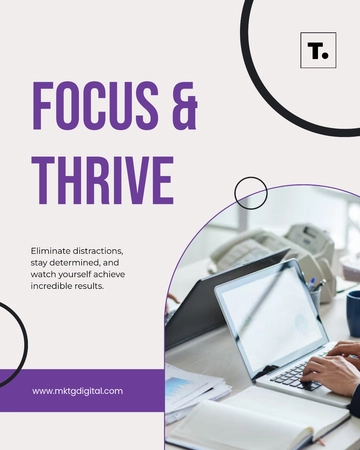Free B2B Social Media Strategy

1. Introduction
A B2B social media strategy involves much more than merely posting content across different social platforms. For [Your Company Name], it is a comprehensive plan that integrates well-thought-out content creation, community engagement, advertising, and analytics to drive business outcomes. The strategy outlined here will detail the necessary steps to make the most of social media for [Your Company Name]’s marketing efforts.
Social media platforms are evolving rapidly, with new features, audience behavior patterns, and algorithms emerging constantly. The strategies outlined in this document are forward-thinking, anticipating trends for 2050 and beyond, to ensure that [Your Company Name] stays ahead of the curve and is able to maximize the potential of every interaction, both with clients and prospects.
1.1 The Importance of Social Media for B2B Companies
For B2B companies like [Your Company Name], social media is no longer just a communication tool. It is integral to the sales funnel, helping generate leads, nurture prospects, and build relationships that lead to conversions. Here are some of the most important benefits:
Lead Generation: Social media platforms provide excellent opportunities to attract and convert leads through targeted advertising, content sharing, and organic engagement.
Brand Awareness: The more visible [Your Company Name] is on social media, the more recognition and credibility it will gain within its industry.
Customer Support and Relationship Building: Social media allows [Your Company Name] to offer real-time support to customers, address concerns, and build long-term relationships.
Thought Leadership: By sharing relevant insights, reports, and industry news, [Your Company Name] can establish itself as an expert in its field.
The growing role of social media in driving key business outcomes is why it is essential for [Your Company Name] to invest in an intentional and robust strategy.
2. Defining Your Business Goals
Before diving into social media tactics, it is essential for [Your Company Name] to define its overarching business goals. Clear goals give the strategy direction and allow for the measurement of success. These goals should align with [Your Company Name]’s mission and long-term vision.
2.1 Business Objectives
The first step in setting clear goals is determining what [Your Company Name] hopes to achieve through social media. Below are common objectives for B2B businesses and specific examples for [Your Company Name]:
Increase Brand Awareness
Objective: Build awareness of [Your Company Name] as an innovative leader in the tech solutions.
Example: Create consistent, informative content that targets C-suite executives in technology companies to demonstrate the unique value proposition of [Your Company Name]’s solutions.
Generate Leads
Objective: Use social media to attract qualified leads who are likely to be interested in [Your Company Name]’s products or services.
Example: Utilize LinkedIn lead generation forms and Twitter polls to collect contact information from users interested in [Your Company Name]’s latest offerings. Additionally, offer free downloadable whitepapers or industry reports in exchange for email addresses.
Improve Customer Engagement
Objective: Foster stronger connections with both current and potential customers.
Example: Engage with followers by responding to comments, retweeting relevant content, and sharing customer success stories. Implement customer satisfaction surveys on Facebook and Twitter to gather real-time feedback.
Drive Website Traffic
Objective: Increase website visits and funnel leads to sales teams.
Example: Share links to blog posts, case studies, and landing pages on Twitter, LinkedIn, and Facebook, driving traffic back to the website. Use strong calls-to-action to encourage click-throughs.
Enhance Customer Retention
Objective: Keep existing customers engaged and satisfied, thereby encouraging repeat business and referrals.
Example: Share customer testimonials, product updates, and industry news that showcase how [Your Company Name] continues to provide value to long-term clients. Offer exclusive deals or discounts to loyal customers.
Position [Your Company Name] as an Industry Leader
Objective: Solidify [Your Company Name]’s reputation as a thought leader in the tech industry.
Example: Regularly publish research findings, blog posts, and participate in webinars or podcasts discussing innovations in the industry, demonstrating expertise and authority.
2.2 Aligning Social Media Strategy with Business Goals
Each of the business goals defined in the previous section should inform the tactics used in your social media strategy. For example:
Lead Generation: Create dedicated landing pages optimized for social media traffic, where prospects can download resources or request a demo.
Brand Awareness: Use targeted ads on LinkedIn to promote educational content about [Your Company Name]’s product offerings, showcasing the company’s leadership in the industry.
By aligning the social media strategy with specific business goals, [Your Company Name] can ensure its social media efforts are purposeful and effective.
3. Identifying Target Audience
Understanding your target audience is essential for ensuring your social media messages resonate and drive engagement. For [Your Company Name], targeting the right businesses and professionals will be critical for success.
3.1 Buyer Persona Creation
Creating detailed buyer personas will help [Your Company Name] understand who it is targeting. These personas are based on data-driven insights and real-world customer profiles. For instance, if [Your Company Name] offers enterprise software solutions, your buyer personas might include:
Persona 1: The CEO
Age: 45-60
Job Role: Chief Executive Officer
Industry: Technology, Manufacturing, or Finance
Pain Points: Need for streamlined operations, cost reduction, and innovation.
Social Media Platforms: LinkedIn, Twitter
Goals: To find solutions that help grow the business, improve efficiencies, and reduce costs.
Persona 2: Marketing Manager
Age: 30-45
Job Role: Marketing Manager, Marketing Director
Industry: Technology, Healthcare, SaaS
Pain Points: Increasing customer acquisition, improving lead generation, and proving ROI of marketing campaigns.
Social Media Platforms: LinkedIn, Instagram, Facebook
Goals: To discover new marketing tools, strategies, and ways to generate leads and increase conversions.
3.2 Audience Segmentation
Segmentation involves breaking down the target audience into smaller groups based on shared characteristics, such as industry, company size, or buying behavior. For example, [Your Company Name] may have different content strategies for the following segments:
Small businesses: They may need more educational content or introductory offers.
Large enterprises: They may respond better to case studies or in-depth whitepapers.
Segmenting the audience helps craft personalized messages that speak to each group’s specific needs and preferences.
4. Selecting the Right Social Media Platforms
Choosing the right platforms is essential for ensuring that your efforts are reaching the right audience. Not all social media platforms are equal when it comes to B2B marketing. For [Your Company Name], selecting the right channels will depend on where the target audience is most active.
4.1 Platform Analysis
Here’s a deeper dive into the platforms that will be most useful for [Your Company Name]:
Platform | Key Features | Ideal Audience | Best Use Case |
|---|---|---|---|
Professional networking, industry groups, sponsored content | B2B professionals, decision-makers | Thought leadership, lead generation, networking | |
Real-time updates, short-form content | Industry experts, media, tech professionals | News sharing, customer engagement, event promotion | |
Community groups, event promotion | Business owners, SMBs, entrepreneurs | Community building, content promotion | |
YouTube | Video content, tutorials, product demos | Marketing teams, tech professionals | Product demos, customer education, webinars |
Visual content, stories, IGTV | Younger decision-makers, creatives | Brand storytelling, visual content, culture promotion | |
X (formerly Twitter) | Short-form updates, customer service | Business professionals across industries | Industry news, customer interaction |
4.2 Evaluating Platform Effectiveness
For example, if [Your Company Name] targets small and medium-sized enterprises (SMEs), Facebook and Instagram may be the most effective platforms for building community and sharing customer success stories. On the other hand, LinkedIn is ideal for targeting senior executives and promoting thought leadership content.
5. Content Strategy
Content is the heartbeat of any social media strategy. It drives conversations, fosters engagement, and positions your company as a trusted resource. At [Your Company Name], content will be the key driver of social media engagement and lead generation.
5.1 Content Creation Guidelines
To engage B2B audiences effectively, content must be valuable, insightful, and tailored to address the specific challenges and interests of your target segments. Content should aim to educate, inform, and entertain, while always tying back to your company’s core values, products, or services.
Thought Leadership
Thought leadership content is crucial for establishing [Your Company Name] as an industry expert. Publishing articles, whitepapers, or industry analyses that delve into emerging trends, new technologies, or challenges within your niche will not only build trust but also establish your brand as an authority in the field.
Example: Write and publish a detailed report on "The Role of Artificial Intelligence in Transforming Supply Chains," showcasing [Your Company Name]'s innovative approach and positioning it as an authoritative thought leader in supply chain management.
Product Demonstrations and Tutorials
Demonstrating how your product or service works is key to driving interest and engagement. These pieces of content can take the form of blog posts, videos, and case studies, each designed to educate your audience on how to solve a particular problem using your offerings.
Example: Create a video tutorial series on LinkedIn showcasing how [Your Company Name]’s software helps businesses streamline their internal workflows. Include detailed use cases, real-world applications, and client testimonials to show how your product delivers value.
Client Testimonials and Case Studies
Showcasing successful client stories is a powerful form of social proof. By featuring the stories of satisfied customers or clients who have benefited from your services, you provide tangible evidence of your product’s impact.
Example: Highlight a case study of a client from the finance industry who successfully adopted your platform, showcasing the measurable improvements in efficiency, cost savings, and time management. Share these insights on LinkedIn and Twitter to build credibility and trust with potential clients.
Interactive Content
Interactive content encourages engagement and participation from your audience. Polls, surveys, quizzes, and interactive infographics can be used to capture attention, spark conversations, and gain insights into the audience’s preferences.
Example: Launch a quarterly industry survey on Twitter to gather opinions from key decision-makers about the future of automation in your sector. Use the insights gathered to craft a follow-up post or report.
Educational Resources
Offering free educational resources such as ebooks, whitepapers, and how-to guides can drive engagement and nurture prospects down the sales funnel.
Example: Publish an ebook titled "A Comprehensive Guide to Transforming Your Business with Cloud Solutions," offering in-depth knowledge on the topic while subtly promoting [Your Company Name]’s products.
Behind-the-Scenes Content
Humanize your brand by sharing behind-the-scenes content that shows the culture, values, and daily operations of your business. This content fosters a connection with your audience, as they get to know the people behind your product or service.
Example: Share stories about your team’s participation in sustainability initiatives, volunteering, or community outreach projects to build brand affinity and align with your audience’s values.
5.2 Content Calendar
A content calendar will ensure that your content is strategically planned, consistent, and aligned with the overall marketing objectives. It helps maintain variety in the content types, ensuring that your social media channels remain dynamic and fresh.
Day | Platform | Content Type | Theme |
|---|---|---|---|
Monday | Thought Leadership Article | Industry Trends & Insights | |
Tuesday | Poll or Interactive Question | Customer Experience | |
Wednesday | YouTube | Product Demo or Tutorial | Product Education |
Thursday | Case Study or Client Testimonial | Success Stories | |
Friday | Behind-the-Scenes or Team Highlight | Company Culture | |
Saturday | Industry News | Trend Watch | |
Sunday | X | Weekend Poll/Engagement | Community Building |
By adhering to a content calendar, [Your Company Name] ensures that all content is timely, relevant, and continuously supports business goals.
6. Social Media Advertising
While organic content will be at the core of your strategy, social media advertising amplifies your reach, helping you target specific business decision-makers and generate leads that convert into long-term clients. For [Your Company Name], a well-executed paid social media campaign can drive business outcomes such as brand awareness, lead generation, and sales.
6.1 Ad Formats and Platforms
LinkedIn Advertising
LinkedIn is the leading platform for B2B advertising. With its professional environment and detailed targeting options, [Your Company Name] can reach specific job titles, industries, and company sizes. Sponsored Content, InMail, and Display Ads can be tailored to meet various marketing objectives.
Example: Use LinkedIn Sponsored Content to promote a whitepaper about "The Future of Automation in Manufacturing," targeting Chief Operating Officers (COOs) in manufacturing companies.
Twitter Advertising
Twitter allows for real-time engagement and conversation. Promoted Tweets, Trends, and Video Ads are effective in raising awareness about your company’s latest product features, events, or thought leadership content.
Example: Run a Twitter Ad campaign featuring a poll about emerging trends in AI, targeting tech decision-makers, and linking to a landing page with a detailed report on AI advancements in the industry.
YouTube Advertising
Video is a powerful medium for showcasing your product. YouTube ads can be used to promote tutorials, product demos, customer success stories, and more. You can use TrueView Ads, which only charge you when someone watches the ad for a specific duration, ensuring cost-effectiveness.
Example: Promote a 30-second video ad that demonstrates how [Your Company Name]’s solution simplifies complex workflows. The ad can appear on videos related to business productivity or industry-specific channels.
6.2 Budget Allocation
For [Your Company Name] to ensure an effective return on investment (ROI), it is essential to allocate budgets to the right platforms based on audience engagement and business goals.
Platform | Monthly Budget | Objectives | Target Audience |
|---|---|---|---|
$5,000 | Lead generation, brand awareness | C-suite executives, decision-makers | |
$3,000 | Product promotion, customer engagement | Tech professionals, marketers | |
$2,500 | Community building, content promotion | Entrepreneurs, small business owners | |
YouTube | $4,000 | Product demos, customer education | Decision-makers in tech & IT |
6.3 Measuring Ad Success
To maximize the ROI from paid campaigns, KPIs such as Cost per Acquisition (CPA), Click-Through Rate (CTR), and Lead Conversion Rate should be tracked.
For instance, if the LinkedIn Sponsored Content campaign resulted in a cost of $[5] per lead but generated [1,000] qualified leads, you can evaluate if the cost aligns with the business goals and if it leads to actual sales conversions. This constant evaluation allows you to refine your advertising tactics for higher impact.
7. Engagement Strategy
Engagement is not just about likes and shares; it’s about building meaningful relationships with your audience. An effective engagement strategy will help [Your Company Name] build credibility, trust, and loyalty, which are crucial for long-term B2B success.
7.1 Responding to Comments and Messages
Timely, personalized responses are key to fostering positive relationships. Whether on LinkedIn, Twitter, or Facebook, promptly engaging with comments, messages, and mentions will make your audience feel valued and heard.
Example: If a customer comments on your LinkedIn post asking about product features, respond with a detailed answer, and offer a call-to-action (CTA) inviting them to a live demo or consultation.
7.2 Building Relationships with Influencers
Influencer marketing in the B2B space is becoming more prevalent. Partnering with respected industry figures to share your insights, showcase products, or co-host webinars will expand your reach and enhance credibility.
Example: Invite a well-known expert in supply chain management to participate in a webinar where both of you discuss emerging industry trends. This collaboration will expose [Your Company Name] to a new audience while leveraging the influencer’s established authority.
7.3 Participating in Industry Conversations
Stay active in industry-specific groups and forums on LinkedIn and Twitter, and join discussions around key topics in your field. This helps position [Your Company Name] as approachable and knowledgeable.
Example: Actively engage in LinkedIn groups discussing the future of AI in business by sharing valuable insights, answering questions, and commenting on posts.
8. Measuring and Optimizing Performance
The beauty of social media lies in the ability to measure and refine your approach continuously. To ensure your efforts are always aligned with your goals, monitoring performance through metrics, tools, and feedback is essential.
8.1 Key Performance Indicators (KPIs)
To measure the effectiveness of your B2B social media efforts, track the following KPIs:
Engagement Rate: Measures the level of interaction (likes, shares, comments) with your content. A higher engagement rate indicates that your content resonates with your audience.
Formula: Engagement Rate = (Total Engagements / Total Followers) × 100
Lead Generation Metrics: Track the number of leads generated through social media channels.
Example: Track the number of leads generated from a LinkedIn sponsored post that promotes your whitepaper.
Conversion Rate: Measures the percentage of visitors who take the desired action, such as filling out a form or signing up for a demo.
Formula: Conversion Rate = (Conversions / Visitors) × 100
Customer Lifetime Value (CLV): The total value a customer will bring over their lifetime, factoring in upsells, repeat business, and referrals. This helps gauge the long-term value of leads generated through social media.
8.2 Tools for Tracking Performance
Use robust tools such as:
Google Analytics: Track website traffic generated through social media links and measure conversions.
LinkedIn Analytics: Monitor engagement and performance metrics of your posts and campaigns.
Hootsuite or Sprout Social: For scheduling, managing, and analyzing your social media content.
8.3 Continuous Improvement
Social media is dynamic, and so should be your strategy. Regularly review your data and tweak your approach to improve results. For example:
If a particular type of content (e.g., video tutorials) is generating higher engagement than others, allocate more resources to create similar content.
Analyze feedback from customers and prospects to understand what type of content they find most valuable.
9. Conclusion
A comprehensive B2B social media strategy is essential for [Your Company Name] to thrive in the competitive landscape of 2050 and beyond. By creating valuable content, strategically leveraging advertising, engaging meaningfully with your audience, and continuously optimizing performance, [Your Company Name] can enhance brand awareness, generate high-quality leads, and establish long-term relationships with clients. This comprehensive approach to social media will not only support business goals but will also position [Your Company Name] as an innovative leader in the industry.
- 100% Customizable, free editor
- Access 1 Million+ Templates, photo’s & graphics
- Download or share as a template
- Click and replace photos, graphics, text, backgrounds
- Resize, crop, AI write & more
- Access advanced editor
Enhance your B2B social media presence with the B2B Social Media Strategy Template from Template.net. This editable and customizable template helps you plan and execute targeted social media campaigns. Personalize it with the AI Editor Tool for your unique needs. Build your strategy today!
You may also like
- Instagram Ad
- Instagram Banner
- Instagram Frame
- Instagram Post
- Instagram Profile Picture
- Instagram Story
- Instagram Story Highlights
- Twitter Ad
- Twitter Header
- Twitter Post
- LinkedIn Photo
- Linkedin Post
- YouTube
- Youtube Ad
- Youtube Banner
- YouTube Channel Art
- YouTube End Screen
- Youtube Profile Photo
- YouTube Thumbnail
- Facebook Ad
- Facebook Cover
- Facebook Post
- Facebook Profile Frame
- Facebook Profile Photo
- Twitch Offline Banner
- Linkedin Banner
- Twitch Overlay
- Whatsapp Status
- Reddit Banner
- Social Media Banner
- Social Media Clipart
- Social Media Plan
- Social Media Contract
- Social Media Planner
- Social Media Report
- Social Media Agreement
- Social Media Business Card
- Social Media Proposal
- Social Media Presentation





























